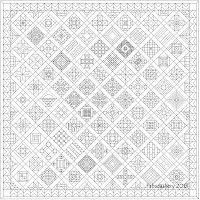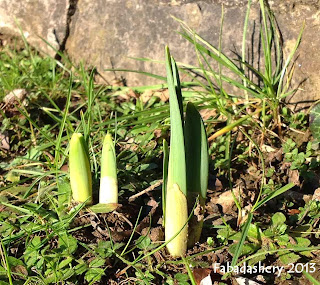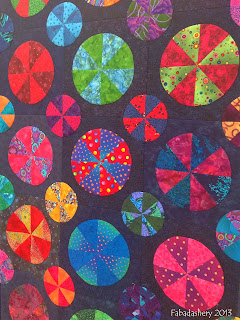 |
| English Paper Piecing the Butterfly Quilt |
Construction
The Butterfly Quilt was hand pieced, using the English Paper Piecing
Method. This involves tacking each piece
of fabric over a paper template, to give it shape and structure, and then
sewing the pieces together. I tend to
leave all the paper in until the top is complete, again, to keep its
structure. I find that this method
leaves me with a dead flat top at the end.
This was a great project. I spent hours
playing with fabrics from my stash and choosing the colour combinations. It was a great portable project too. I used my train journey to work to cover
paper templates and piece blocks, and it went on many car journeys, as well as
holidays to Amsterdam, France and the USA.
This is where all the action took place, and without a fuss, quietly the
blocks came together. Once the blocks were together I decided it needed a
border to frame it. I pieced 2.5” x ¾”
strips together out of the scraps, and that made up the border, along with
calico borders. In a large quilt like this, don’t underestimate how long it
will take to remove the paper templates!
For the back of the quilt, I used the same cream calico as on the
front.
Before I put the sandwich together I needed to add the 64
antennae. The antennae of the butterflies are hand embroidered, using a backstitch,
in a regular stranded embroidery cotton.
The wadding in the middle is 100% polyester. All I remember about it is that I wanted one
piece of wadding, and with the large quilt, my choices were limited. I had also previously had a BAD experience hand
quilting cotton wadding, which ‘bearded’ on a navy background, so I knew I
wanted to give that a wide berth. Having
used the quilt daily for several years, I still really like the feel of it.
Quilting
When it came to the quilting, I knew I wanted to hand quilt it, but I
didn’t know where to start. As the top
gradually came together, I knew I had to do something about it, so I booked
onto a Sandie Lush Hand Quilting Workshop, at Busy Bees, in Newport. That was a
brilliant class, and I left with the confidence to start quilting the
Butterflies Quilt. I didn’t know what to
quilt on it, so I made up my own pattern (not without MUCH deliberation),
having outlined the butterflies, and ‘stitched in the ditch’ of their
bodies. I remember quilting this quilt quite
distinctly. It was July and August in 2006.
It was HOT. And I was underneath
a quilt, hand quilting. I was quilting
to a deadline – I had entered it into the NEC Festival of Quilts in Birmingham,
so it had to be done, ready for delivery in August. Without the deadline, I think I would have
done more quilting on it.
 |
| Example of Butterfly Quilt Block |
Once complete, I washed it in the washing machine. I had been dragging this quilt around with me
everywhere for a couple of years. The
cat had regularly sat on it whilst I quilted, and the heat of the summer meant
that more recently, it had taken the brunt of my perspiration. It washed up a treat on a 40 degree wash, and
luckily the sun remained out long enough for it to dry outside on the washing
line. However, almost immediately, it was packed up and taken to the depot
where they were collecting the quilts for the show. I was missing it already.




















